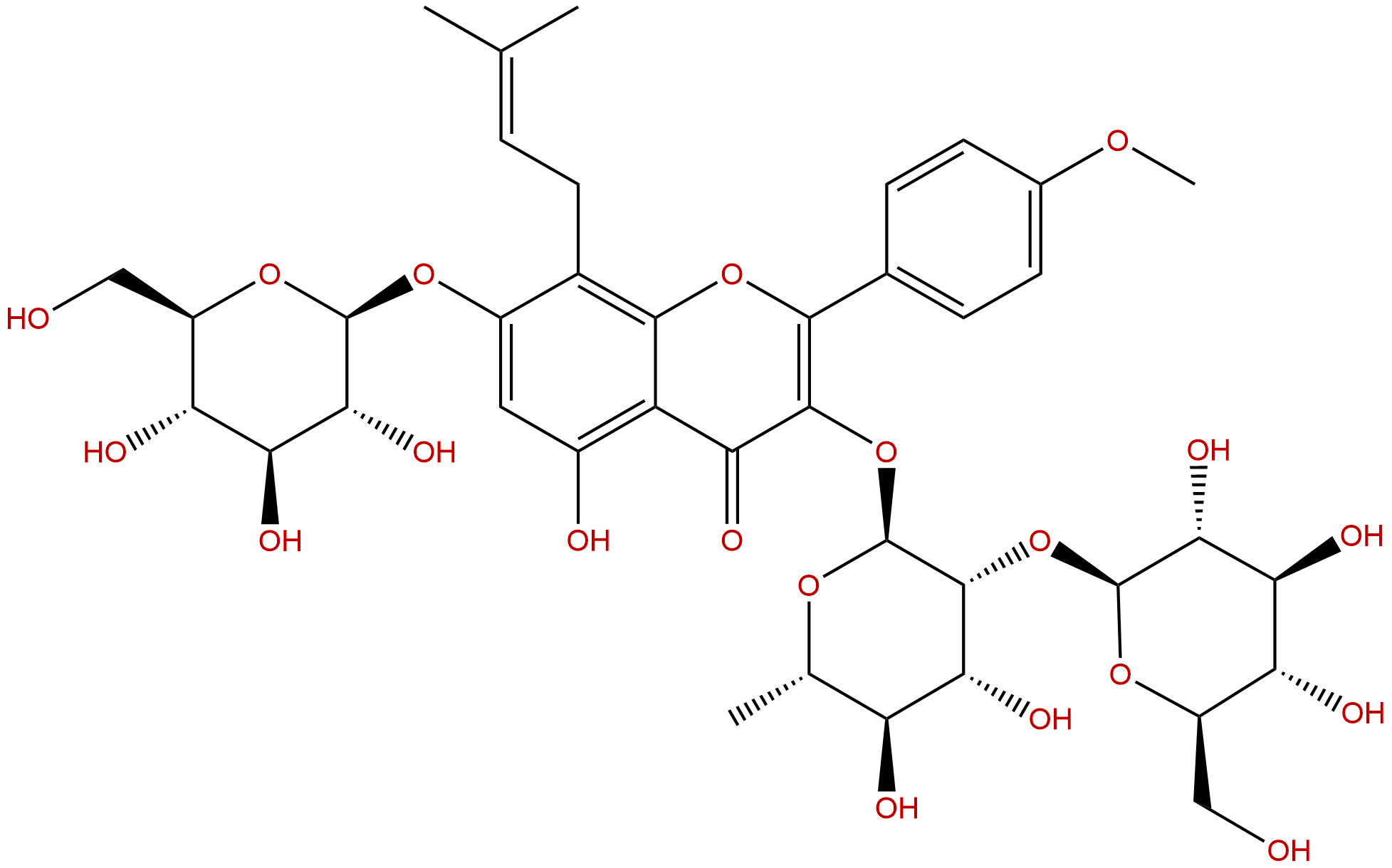
Epimedin ACAS No.:110623-72-8
|
||||||||||
 |
|
|
||||||||

| Catalogue No.: | BP0544 |
| Formula: | C39H50O20 |
| Mol Weight: | 838.809 |
Synonym name:
Catalogue No.: BP0544
Cas No.: 110623-72-8
Formula: C39H50O20
Mol Weight: 838.809
Botanical Source: Epimedium koreanum
Purity: 95%~99%
Analysis Method: HPLC-DAD or/and HPLC-ELSD
Identification Method: Mass, NMR
Packing: Brown vial or HDPE plastic bottle
Can be supplied from milligrams to grams.
For Reference Standard and R&D, Not for Human Use Directly.
Inquire for bulk scale.
Description:
Epimedin A,epimendin B, epimendin C, icariin and baohuoside are flavonoids, main active ingredient in Epimedium, have clear anti-osteoporosis effect, the accumulation of epimedins A, B, C, and icariin in a traditional medicinal plant could be suppressed by light stress.
References:
Acta Physiol Plant, 2013, 35(11):3271-5.Light stress suppresses the accumulation of epimedins A, B, C, and icariin in Epimedium, a traditional medicinal plant.
Epimedium is well-known in China and East Asia due to high content of flavonoid derivatives, including icariin, Epimedin A, Epimedin B, and epimedin C, hereafter designated as bioactive components, which have been extensively utilized to cure many diseases. So far, the molecular mechanism of the bioactive components biosynthesis remains unclear.
METHODS AND RESULTS:
In the present study, the effect of light stress (24 h illumination) on the accumulation of bioactive components and the expression of flavonoid genes in Epimedium was investigated. Under light stress, the structural genes CHS1, CHI1, F3H, FLS, DFR1, DFR2, and ANS were remarkably up-regulated while CHS2 and F3′H were significantly down-regulated. For transcription factors, the expression of Epimedium MYB7 and TT8 were increased while Epimedium GL3, MYBF, and TTG1 expression were depressed. Additionally, the content of bioactive components was significantly decreased under light stress.
CONCLUSIONS:
Our results suggested that the decrease of bioactive compounds may be attributed to transcripts of late genes (DFRs and ANS) increased to a higher level than that of early genes (FLS and CHS1).
Yao Xue Xue Bao. 2014 Jun;49(6):932-7.
[Two-dimensional zebrafish model combined with hyphenated chromatographic techniques for evaluation anti-osteoporosis activity of epimendin A and its metabolite baohuoside I].
This article firstly established a new efficient method for screening anti-osteoporosis ingredients, which used two-dimensional zebrafish model combined with hyphenated chromatographic techniques to evaluate anti-osteoporosis activities of Epimedin A and its metabolite baohuoside I.
METHODS AND RESULTS:
Adult zebrafish was used for metabolism of Epimedin A in 0.5% DMSO, and LC-MS was used for analysis of the metabolite, which was captured by HPLC, and prednisolone-induced osteoporosis model of zebrafish was used to evaluate the anti-osteoporotic activities of trace amounts of Epimedin A and baohuoside I. The results indicated that Epimedin A and baohuoside I can prevent prednisolone-induced osteoporosis in zebrafish. The developed method in this paper enables the separation, enrichment and analysis of micro-amount metabolite of Epimedin A, and anti-osteoporosis activities in vivo of Epimedin A and baohuoside I was simple and efficient screening resorting to zebrafish osteoporosis mode.
CONCLUSIONS:
This paper would provide new ideas and methods for a rapid and early discovery of anti-osteoporosis activities of micro-ingredients and its metabolite of traditional Chinese medicine.
HPLC of Epimedin A
